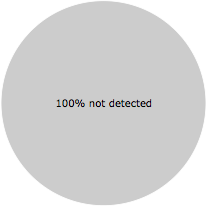What is sqmapi.dll?
sqmapi.dll is part of Microsoft® Windows® Operating System and developed by Microsoft Corporation according to the sqmapi.dll version information.
sqmapi.dll's description is "SQM Client"
sqmapi.dll is usually located in the 'C:\Program Files\Internet Explorer\' folder.
None of the anti-virus scanners at VirusTotal reports anything malicious about sqmapi.dll.
If you have additional information about the file, please share it with the FreeFixer users by posting a comment at the bottom of this page.
Vendor and version information [?]
The following is the available information on sqmapi.dll:
| Property | Value |
|---|---|
| Product name | Microsoft® Windows® Operating System |
| Company name | Microsoft Corporation |
| File description | SQM Client |
| Internal name | sqmapi |
| Original filename | sqmapi.dll |
| Legal copyright | © Microsoft Corporation. All rights reserved. |
| Product version | 6.0.6000.16386 |
| File version | 6.0.6000.16386 (vista_rtm.061101-2205) |
Here's a screenshot of the file properties when displayed by Windows Explorer:
| Product name | Microsoft® Windows® Operating System |
| Company name | Microsoft Corporation |
| File description | SQM Client |
| Internal name | sqmapi |
| Original filename | sqmapi.dll |
| Legal copyright | © Microsoft Corporation. All rights.. |
| Product version | 6.0.6000.16386 |
| File version | 6.0.6000.16386 (vista_rtm.061101-2205) |
VirusTotal report
None of the 49 anti-virus programs at VirusTotal detected the sqmapi.dll file.
Hashes [?]
| Property | Value |
|---|---|
| MD5 | 5eb87ba0b93ca7e894fc8002e3ce4c2a |
| SHA256 | 3736fa95578d4833cdc2bdee10cbbeac6b4d4a8e3d89e50e8723bba312ffe4f5 |
What will you do with sqmapi.dll?
To help other users, please let us know what you will do with sqmapi.dll:
What did other users do?
The poll result listed below shows what users chose to do with sqmapi.dll. 55% have voted for removal. Based on votes from 20 users.

NOTE: Please do not use this poll as the only source of input to determine what you will do with sqmapi.dll.
Malware or legitimate?
If you feel that you need more information to determine if your should keep this file or remove it, please read this guide.
And now some shameless self promotion ;)
 Hi, my name is Roger Karlsson. I've been running this website since 2006. I want to let you know about the FreeFixer program. FreeFixer is a freeware tool that analyzes your system and let you manually identify unwanted programs. Once you've identified some malware files, FreeFixer is pretty good at removing them. You can download FreeFixer here. It runs on Windows 2000/XP/2003/2008/2016/2019/Vista/7/8/8.1/10. Supports both 32- and 64-bit Windows.
Hi, my name is Roger Karlsson. I've been running this website since 2006. I want to let you know about the FreeFixer program. FreeFixer is a freeware tool that analyzes your system and let you manually identify unwanted programs. Once you've identified some malware files, FreeFixer is pretty good at removing them. You can download FreeFixer here. It runs on Windows 2000/XP/2003/2008/2016/2019/Vista/7/8/8.1/10. Supports both 32- and 64-bit Windows.
If you have questions, feedback on FreeFixer or the freefixer.com website, need help analyzing FreeFixer's scan result or just want to say hello, please contact me. You can find my email address at the contact page.
Comments
Please share with the other users what you think about this file. What does this file do? Is it legitimate or something that your computer is better without? Do you know how it was installed on your system? Did you install it yourself or did it come bundled with some other software? Is it running smoothly or do you get some error message? Any information that will help to document this file is welcome. Thank you for your contributions.
I'm reading all new comments so don't hesitate to post a question about the file. If I don't have the answer perhaps another user can help you.
SQM (Software Quality Metrics) is Microsoft Spyware! It reports your usage of Microsoft software products--like their Windows OS's and Windows Live programs. You can turn it off, but Microsoft's software will still create reports of your usage of their products. The report files have the extension name of "sqm" and can all be deleted from your system on a regular basis by configuring your computer cleaner (e.g., Piriform's CCleaner) to do so.
Their are 129 instances of SQMAPI.DLL application files (e.g., in Microsoft software installer packages and in their installed software) on my Windows 7/64-bit computer alone that cannot be removed because of their security settings. People have reported major problems running their computers after removing them, so don't do it! Just delete the SQM reports (e.g., clean your computer) before going online (and after going offline).
# 15 Jul 2018, 12:44

Jim writes